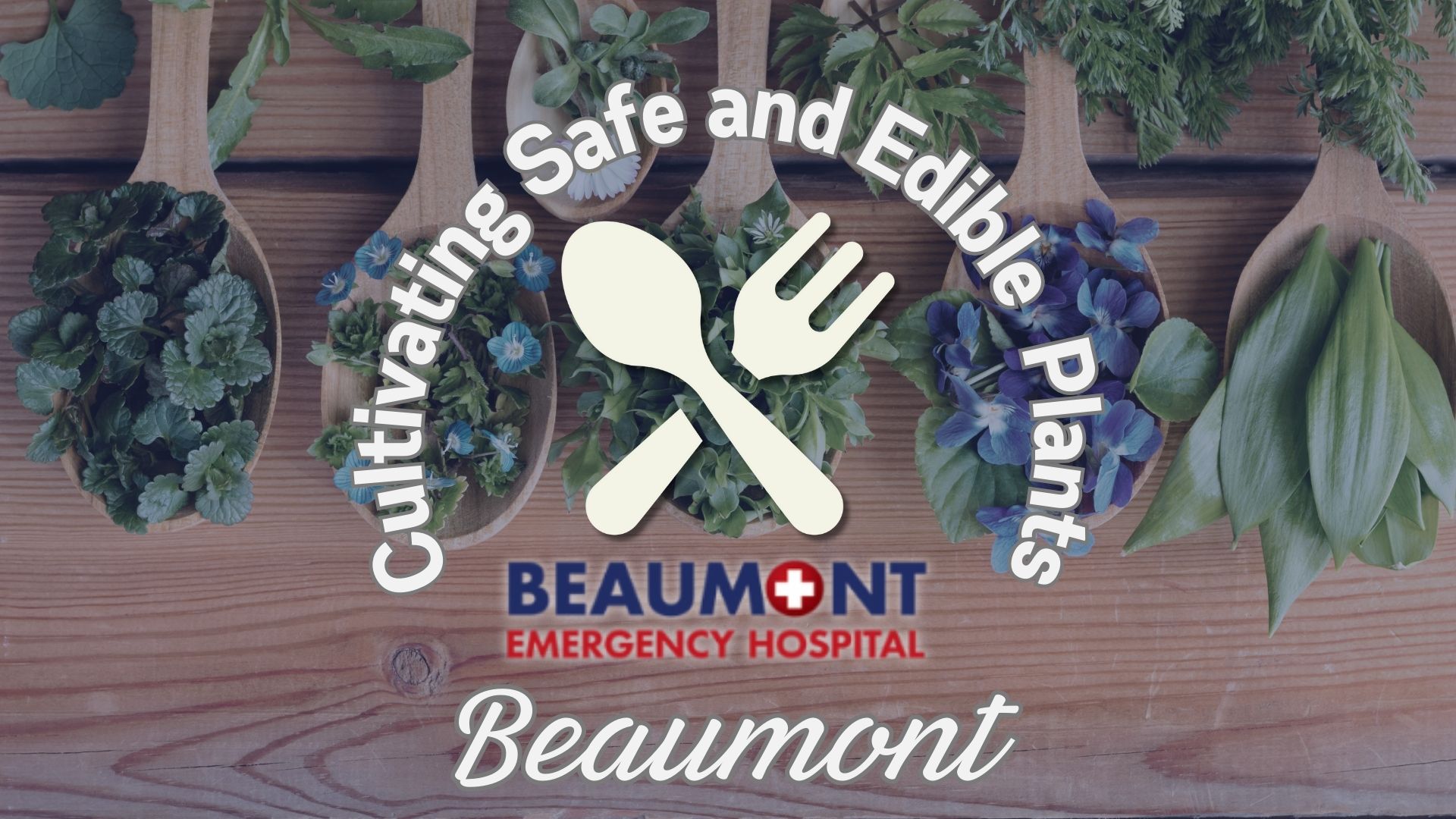
Safe and edible plants in Beaumont are gaining recognition as families look for ways to eat healthy and clean. You can explore the display of edible native Texas plants at the Lady Bird Johnson Wildflower Center in Austin, a great day trip from the Beaumont area. Being informed about safe and edible plants is part of this adventure. Many safe plants have unsafe look-alikes, so when in doubt, refrain from eating plants of unknown origin. Here, we list here a few of the plants included in the – “OK to eat” category, and then some that are not safe to eat to keep your family healthy and well.
Safe Edible Plants
Five native edible plants in Beaumont include:
1. American Beautyberry (Callicarpa americana): Its berries can be used to make jellies and sauces.
2. Southern Dewberry (Rubus trivialis): The berries are similar to blackberries and can be eaten fresh or used in desserts.
3. Eastern Prickly Pear (Opuntia humifusa): The pads (nopales) and fruit (tunas) are edible and can be used in a variety of dishes.
4. Yaupon Holly (Ilex vomitoria): The leaves can be used to make a caffeinated tea known as “yaupon tea.”
5. Texas Persimmon (Diospyros texana): The fruit is edible when fully ripe and can be eaten fresh or used in jams and desserts.
Remember to always identify any wild plant positively before consuming it. Additionally, consider consulting with a knowledgeable forager or botanist for guidance.
You can find a complete list of edible plants HERE.
Texas Plants that are Unsafe to Eat
Here are five Texas plants that are unsafe to eat:
- Poison Ivy (Toxicodendron radicans)
- Poison Oak (Toxicodendron pubescens)
- Jimsonweed (Datura stramonium)
- Texas Mountain Laurel (Sophora secundiflora)
- Buckeye (Aesculus spp.)
These plants contain toxins that can cause skin irritation, gastrointestinal distress, or more severe reactions if ingested. It’s important to identify these and other toxic plants to avoid accidental ingestion or contact.
What to Do When You Suspect Ingesting a Poisonous Plant?
If someone ingests a poisonous plant, follow these steps:
- Remain Calm: Keep the person calm and reassure them.
- Identify the Plant: Try to identify the plant ingested to provide accurate information to medical professionals.
- Do Not Induce Vomiting: Avoid induced vomiting unless instructed by a medical professional. Call Poison Control: Immediately contact the Poison Control Center at 1-800-222-1222 for guidance.
- Seek Medical Attention: If advised, or if the person shows severe symptoms, go to the nearest emergency room or call 911.
These actions can help manage the situation effectively and ensure that your loved one receives the necessary medical treatment. Beaumont Emergency Hospital provides a fast response with a higher level of care which is critical in medical emergencies, especially in times that you may be caught off guard, including when a poisonous plant is accidentally ingested.
Our onsite laboratory and radiology departments are available 24/7. Our Pediatric Suite is a welcoming safe space for young children being treated in our facility.
While we love to try new things as much as you do, we want you to stay safe while exploring new culinary adventures.
We love our Beaumont families and are here for you, right when you need us.
Works Cited
“Special Collections.” Lady Bird Johnson Wildflower Center – The University of Texas at Austin, www.wildflower.org/collections/collection.php?collection=centex_edible. Accessed 28 May 2024.
“WebPOISONCONTROL Triage.” webPOISONCONTROL Triage, triage.webpoisoncontrol.org/#!/exclusions. Accessed 28 May 2024.
